Getting inexpensive produce is the holy grail in our search for staying healthy and on a budget. Sometimes it seems impossible to avoid paying full price for fruits and veggies. But thankfully, it’s not.
There are, in fact, ways to skirt the high prices we often see on fresh produce. I’ll share all my best tips for finding inexpensive produce, including the best place to buy it, along with some out-of-the box ideas for finding cheap produce online, too. Not to mention where to find produce coupons and how to get produce delivery.
Now the only “getting healthy” hurdle you’ll have to jump over is learning to like kale. Godspeed.
Download The Krazy Coupon Lady app for the latest money-saving hacks sent straight to your phone.
1. Where to Find the Cheapest Fruits and Vegetables Near You

The best place to buy produce is Aldi, although it will depend on what you’re buying. I looked at 10 popular produce items across six stores and found Aldi came in most consistently with the lowest prices (bananas, strawberries, Roma tomatoes, and broccoli).
2. Costco doesn’t always have the most inexpensive produce.
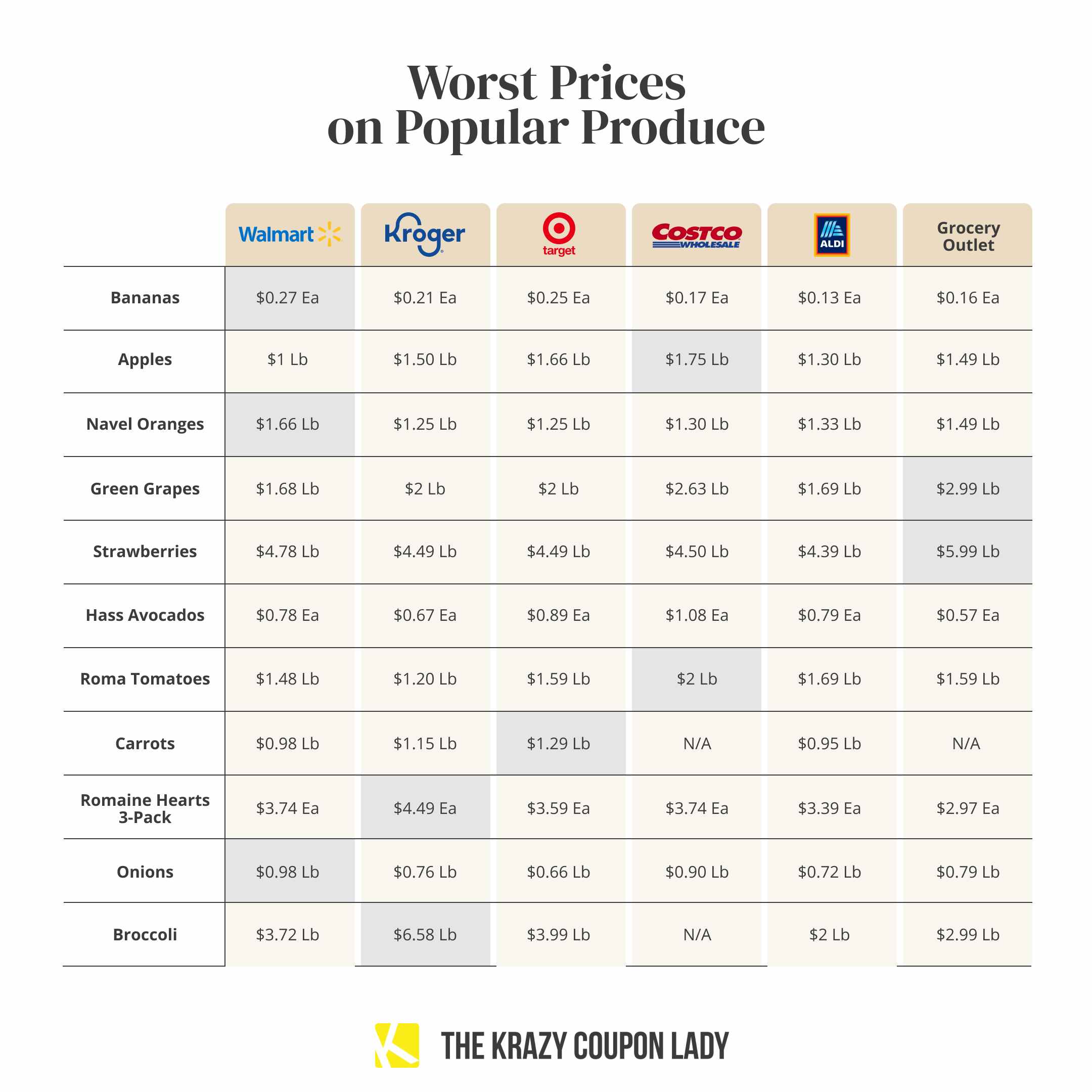
Some surprises here. Walmart and Grocery Outlet teeter on the edge of being the highest price. But the biggest surprise is Costco. Most likely, you already know not to blindly shop Costco, especially for produce! Not only do they show up in this comparison with the highest prices, but it’s often difficult for average-sized families to consume all the produce before it goes bad. All reasons to stick to Costco’s best deals and avoid their fresh fruits and veg.
3. Stop at roadside stands.
Roadside stands are reliable places to get good deals on produce that was literally hanging on a vine somewhere an hour or two ago. Often they are located just outside the metro city limits. Not only are you supporting a small business, which is a nice thing, but in theory, you’re getting fresh, local produce.
4. Shop any store on a Wednesday.
For many grocers, midweek is the time when new produce shipments arrive (same goes for meat and seafood). So older produce is marked to sell to make room for the new arrivals. I can often get great deals on organic greens, for example, just by heading to my local Kroger on a Wednesday.
5. Buy your organic produce at Sprouts.
Sprouts is a farmers market and grocer all in one. While many of their supplements, teas, and snacks are pricier than at Whole Foods, their big loss leader is fresh produce. This means they mark it down hoping to lure you into the store to buy the more expensive items. See if you have Sprouts in your area.
6. Visit local farmers markets either early or late in the day.
This is the key to getting the best produce deals of the day. Arrive early and sellers are eager to move their produce inventory; arrive late and sellers are keen to off-load the last produce so they can pack up and go home.
7. Memorize what’s in season and shop accordingly.
Certain produce comes into season at specific times each year. Buy fruits and veggies when it’s their peak season and you’ll find some of the lowest prices you’ll see all year. This goes for major commercial grocers, too.
8. Use Ibotta and Checkout 51 for fresh produce savings.
One common couponing myth is that you can’t find coupons or cash-back savings for buying fresh produce. Today, nothing could be farther from the truth.
Ibotta and Checkout 51 are rebate apps that offer select produce savings when you upload a picture of your receipt.
On any given day, Ibotta offers multiple produce rebates. In fact, a glimpse at Ibotta’s offers right now shows rebates on blackberries at Walmart. In the past, I’ve seen offers for cash back on apples at Costco, grapes, blueberries and kiwis at Target, prepackaged salad greens at Walmart, and cherry tomatoes at Albertsons/Vons. Offers rotate frequently, so keep checking back.
Learn more about where to find free grocery coupons.
9. Consider buying inexpensive produce online.
A host of “cyber produce markets” are using the Internet to reach out to folks who want to eat healthy on a budget. It can be worth it to compare what you pay locally against what these online markets may offer you (be sure to calculate in shipping when you do this!).
The best way to start is by using an organic produce list like what Green People compiles, in order to see what markets are out there.
10. Ask for “seconds” when you are shopping for produce.
“Seconds” is the grocery industry’s term for products that are basically “un-saleable.” In the produce department, this may mean a bruised peach, a tomato with a soft spot, or even strawberries that grew into odd shapes.
Often the produce manager will have to toss these and take a loss — unless you ask about the possibility of buying them at a deep discount. Chances are good that they’ll be happy to move their seconds at any price they can get!
11. Consider produce delivery services like Misfits Market or Imperfect Produce.
These are two retailers that operate like subscription boxes for “ugly” produce. This is produce that is perfectly fine (high-quality, not blemished or overripe), but it has one thing working against it. It’s not pretty. Traditional grocery stores have trouble selling ugly produce because consumers equate it with lower quality. But you can get up to 40% savings if you don’t mind a little ugly in your life. I recently did a Misfits Market vs. Imperfect Produce comparison so you can decide which one is right for you.
12. Ask about wholesale produce.
Whether at a local farm or farmers market or through the grocery store produce manager’s stockroom or distribution channels, you can often score discounts of 10% – 15% off or higher (close to wholesale cost) if you buy produce in bulk.
But you have to be prepared to eat and/or freeze a lot of produce to negotiate this kind of deal. It’s best to try to go in together with a few other families to be sure you can all save and also consume everything you buy.












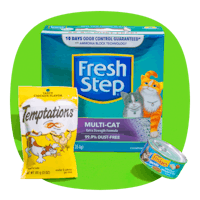



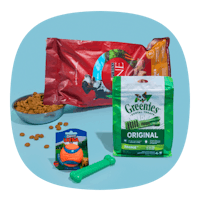
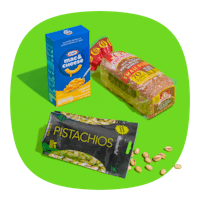


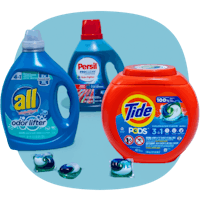











Tell us what you think